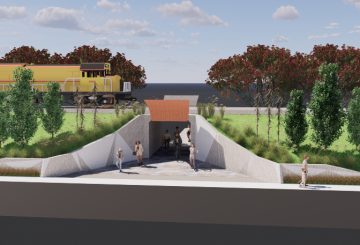オーロラを見るのが好きな人には、空を照らす予想外に明るいディスプレイが贈られました。写真家たちは、はるか北のベイ・オブ・プレンティまで光を捉えることができました。
米国政府の宇宙天気予報センターによると、撮影した機器は、土曜日から日曜日(ニュージーランド時間)の夜間に、自分のスケールでレベルG4までの地磁気の変化を観測したそうです。このレベルは、一部の人口密集地域からも確認できるほど高くなっています。縮尺の範囲は 1 ~ 5 で、1 が最低、5 が最高です。
写真家たちは、はるか北のネルソン、ウェリントン、タウランガといった色とりどりの光の写真を共有しました。これらの光は、肉眼では見えない場合でもカメラで記録できることがよくあります。
ある写真家のベルは、土曜日の午前3時少し前に、クライストチャーチの南にあるスプリングストンからオーロラの素晴らしいショットを撮ることができました。彼女は早起きして空港旅行に出かけました。彼女の6歳と4歳の子供たちは、携帯電話のカメラを通して色とりどりの光を見て楽しんでいました。
もう一人の写真家、ニック・カイザーワードは、テ・アナウのヘンリー湖からの展示を見ました。彼はこう言いました。「これほど大きく見えるとは誰も予想していなかったと思います。夕方の早い時間には、肉眼でかなりのパワーと色が見えましたが、実際には午前1時30分頃に物事が急上昇しました。」
ニックは、動きの速いターゲットを捉えるには常にカメラの設定を調整する必要があるため、オーロラの撮影方法を学ぶのは難しいと付け加えました。
エマ・ジェンキンソンも土曜日の早い時間に地磁気の光をなんとか撮影しました。彼女は午前2時30分にスチュアート島ラキウラのハーフムーンベイで撮影しました。
米国宇宙天気予報センターは、日曜日までの夜間にさらに地磁気活動が増えると予想されていたが、G1に到達する見込みはG1に過ぎず、オーロラハンターが興奮するほど高くないと発表している。




















































-360x245.jpg)









